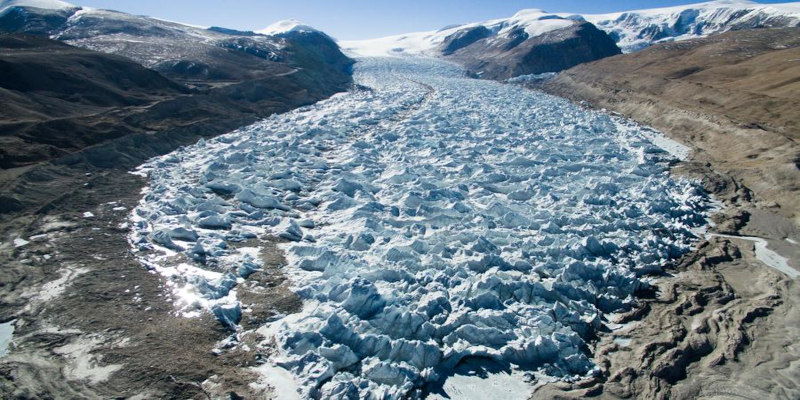Dharamshala, 21st July: According to the journal Microbiome, Scientists studying glacier ice discovered viruses that were about 15,000 years old in two samples retrieved from China’s Tibetan Plateau. The majority of those viruses, which survived because they were frozen, are unlike any viruses ever cataloged. The findings, which were published in the journal Microbiome today, could aid scientists in better understanding how viruses have changed through time. The researchers also developed a new, ultra-clean method for identifying bacteria and viruses in ice without polluting it for this study.
The scientists looked at ice cores retrieved from the Guliya ice cap in western China in 2015. The cores are taken at high altitudes, with the summit of Guliya, where this ice originated, standing at 22,000 feet above sea level. Year after year, layers of ice build-up in the ice cores, capturing whatever was in the atmosphere surrounding them at the time each layer froze. These layers provide a sort of timeline that scientists have used to learn more about climate change, microorganisms, viruses, and gases throughout history.
Using a combination of established and new, unique approaches, researchers discovered that the ice was nearly 15,000 years old. They discovered genetic blueprints for 33 viruses while analyzing the ice. The scientific community has already discovered four of these viruses. However, at least 28 of them are brand new. About half of them appeared to have made it through the ice, not because of it, but because of it.
Because viruses lack a single universal gene, labeling a new virus—and attempting to find out where it fits into the existing virus landscape—involves several processes. Scientists analyze gene sets to compare undiscovered viruses to known viruses. In scientific databases, gene sets from known viruses are cataloged.
Four of the viruses found in the Guliya ice cap cores had previously been discovered and were from viral families that generally infect bacteria, according to the database comparisons. The researchers discovered the viruses in considerably lower concentrations than those seen in oceans or soil. Based on the environment and known virus databases, the researchers concluded that the viruses most likely originated in soil or plants rather than animals or humans.
Virus research in glaciers is a relatively recent field: Viruses have only been found in old glacier ice in two earlier studies. According to Lonnie Thompson, senior author of the study and distinguished university professor of earth sciences at Ohio State University and senior research scientist at the Byrd Center, it is an area of science that is growing more significant as the climate changes.
Image source: chinadaily

